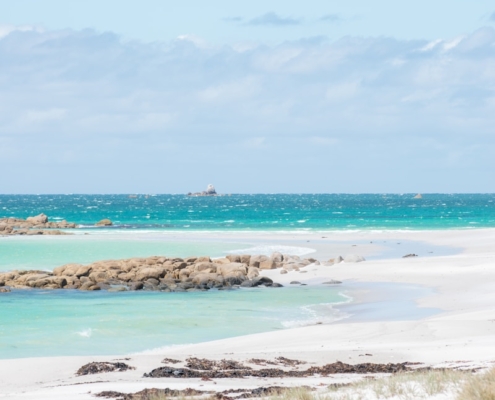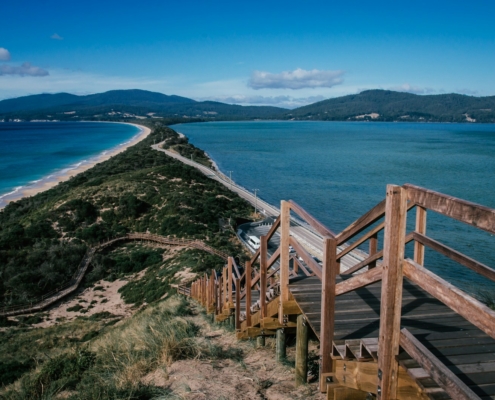Ultimate Guide to Traveling to Tasmania: Explore the Island’s Natural Wonders and Unique Charm
Tasmania, Australia’s island state, is a hidden gem that offers an incredible range of experiences for every type of traveler. From rugged wilderness and pristine beaches to charming towns and rich cultural heritage, Tasmania has something for everyone. If you’re planning a trip to this spectacular destination, this ultimate guide to traveling to Tasmania will help you make the most of your time on the island.

Why Visit Tasmania?
Tasmania, often referred to as “Tassie,” is one of Australia’s best-kept secrets. The island is a haven for nature lovers, adventure seekers, history buffs, and those looking for a peaceful getaway. Tasmania boasts an impressive collection of national parks, UNESCO World Heritage Sites, and an abundance of wildlife, making it the perfect destination for outdoor enthusiasts.
But there’s more to Tasmania than its natural beauty. The state is also home to a burgeoning food scene, thriving art communities, and some of the most welcoming locals you’ll ever meet. Whether you’re planning a short trip or an extended vacation, Tasmania offers a diverse range of experiences that will leave you wanting more.
Top Destinations to Visit in Tasmania
1. Hobart – Tasmania’s Capital
Hobart, the capital of Tasmania, is a vibrant, historic city nestled on the banks of the Derwent River. The city is a perfect blend of old-world charm and modern-day culture. Don’t miss the Salamanca Market, held every Saturday, where you can shop for local produce, arts and crafts, and delicious food.
For an unforgettable view of Hobart, take a trip up to Mount Wellington. The summit offers panoramic views of the city and surrounding wilderness. For history enthusiasts, the Tasmanian Museum and Art Gallery and Port Arthur Historic Site are must-visit attractions.
2. Cradle Mountain-Lake St Clair National Park
If you’re an outdoor adventurer, Cradle Mountain is a must-see. The park is a UNESCO World Heritage Site and offers a range of activities, including hiking, wildlife spotting, and scenic photography. The Overland Track, a 65-kilometer trek through alpine landscapes, is one of Australia’s most iconic hikes. Even if you’re not into trekking, there are plenty of shorter walks, such as the Dove Lake Circuit, that offer breathtaking views of the mountain.
3. Freycinet National Park
Freycinet National Park is home to some of Tasmania’s most iconic beaches, including the stunning Wineglass Bay. The park offers a range of walks, from short and easy trails to more challenging hikes that take you to panoramic viewpoints. Aside from hiking, Freycinet is perfect for kayaking, swimming, and wildlife spotting. Keep an eye out for the park’s native wildlife, including wallabies, echidnas, and a variety of bird species.
4. Bay of Fires
The Bay of Fires is one of Tasmania’s most beautiful coastal regions, known for its crystal-clear waters, white sandy beaches, and distinctive orange-hued granite rocks. It’s an excellent spot for camping, beach walking, and wildlife watching. The bay is also a great place for swimming, snorkeling, and exploring hidden coves.
5. Bruny Island
Just off the coast of Hobart, Bruny Island is a paradise for foodies and nature lovers. The island is famous for its gourmet produce, including oysters, cheese, and chocolate. You can take a tour of the island’s food and wine offerings or go on a wildlife cruise to see seals, dolphins, and even penguins. The island also features pristine beaches, rugged cliffs, and walking trails that offer stunning views of the surrounding coastline.

Best Time to Visit Tasmania
Tasmania is a year-round destination, but the best time to visit depends on what you’re looking to do.
– Summer (December to February): The warmest time of the year, perfect for outdoor activities, beach visits, and hiking. Summer brings long daylight hours, making it ideal for exploring the island’s natural beauty.
– Autumn (March to May): Fall is one of the most beautiful seasons in Tasmania, with the changing leaves offering vibrant colors throughout the island. It’s a great time for hiking and visiting vineyards, as Tasmania’s wine regions are at their best during this season.
– Winter (June to August): Winter is cold but magical in Tasmania, especially for those who enjoy a cozy winter getaway. This is the best time to visit if you’re into snow-capped mountains, winter festivals, and enjoying a warm drink by the fire.
– Spring (September to November): Spring brings mild temperatures, blooming flowers, and fewer tourists. It’s a great time to enjoy outdoor activities like hiking and wildlife watching without the crowds.
How to Get to Tasmania
Tasmania is easily accessible by air, sea, or road:
– By Air: The island has two main airports, Hobart International Airport (HBA) and Launceston Airport (LST), both of which are well-connected to major Australian cities like Melbourne, Sydney, and Brisbane. International flights are limited, but you can connect via mainland Australia.
– By Sea: You can also reach Tasmania via ferry from Melbourne, with the Spirit of Tasmania offering a comfortable overnight service. This is a great option for travelers who want to bring their vehicle or campervan.
– By Road: If you’re already on the Australian mainland, driving to Tasmania is an option via ferry or driving to Melbourne and then taking the ferry.
Getting Around Tasmania
Once you’re in Tasmania, getting around is relatively easy. Renting a car is the most convenient option for exploring the island, as many of Tasmania’s attractions are spread out and can be best accessed by car. The roads are scenic, and driving around the island is a relaxing and enjoyable experience.
For those not keen on driving, there are guided tours, buses, and even cycling tours available, especially in popular areas like Hobart and Launceston.
Tips for Traveling to Tasmania
– Pack for all seasons: Tasmania’s weather can be unpredictable, so it’s essential to bring clothing for all conditions, including rain, wind, and sunshine.
– Respect nature: Tasmania is home to some of the most pristine natural environments in the world. Be sure to follow Leave No Trace principles and respect local wildlife and habitats.
– Book in advance: Especially during the peak season (December to February), accommodations and tours can fill up quickly. Booking in advance ensures you get the best options.
– Stay flexible: Some areas, particularly in remote national parks, may have limited services or facilities. It’s a good idea to plan ahead but also be prepared for changes in your itinerary.
Conclusion: A Unique Destination Worth Exploring
Tasmania is a place that offers something unique for every traveler. Whether you’re hiking through pristine forests, exploring historic sites, indulging in local food, or simply relaxing in a picturesque town, Tasmania provides a memorable experience that you won’t find anywhere else. With its natural beauty, welcoming locals, and abundant outdoor adventures, Tasmania is truly one of Australia’s best destinations to explore.
So, pack your bags and get ready to discover the wonders of this extraordinary island – Tasmania awaits!

